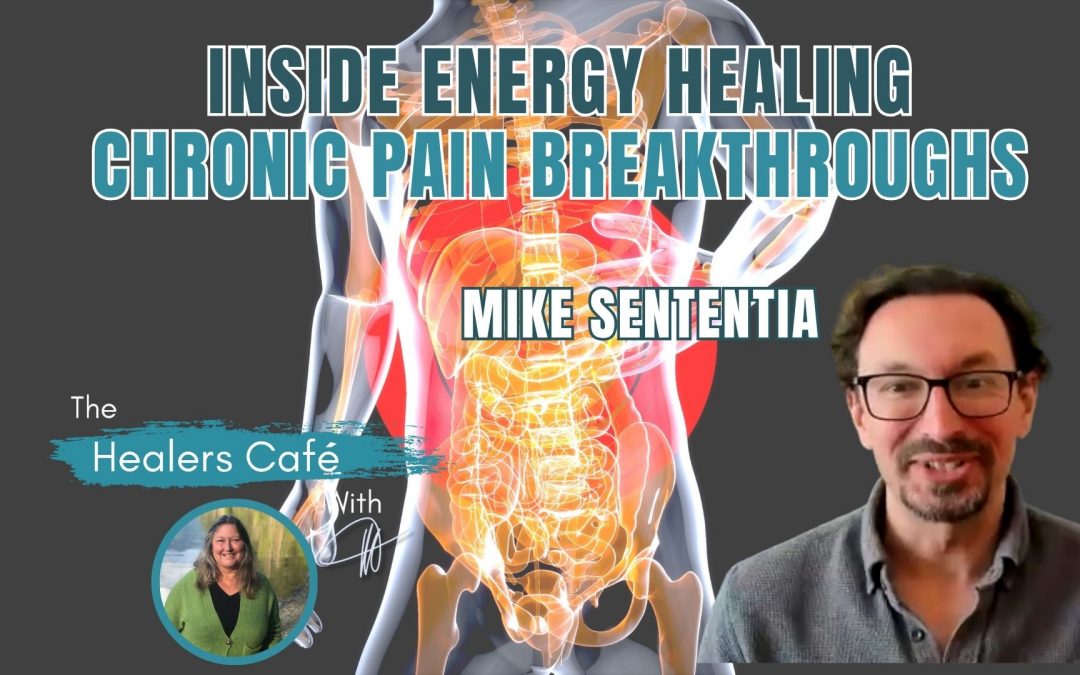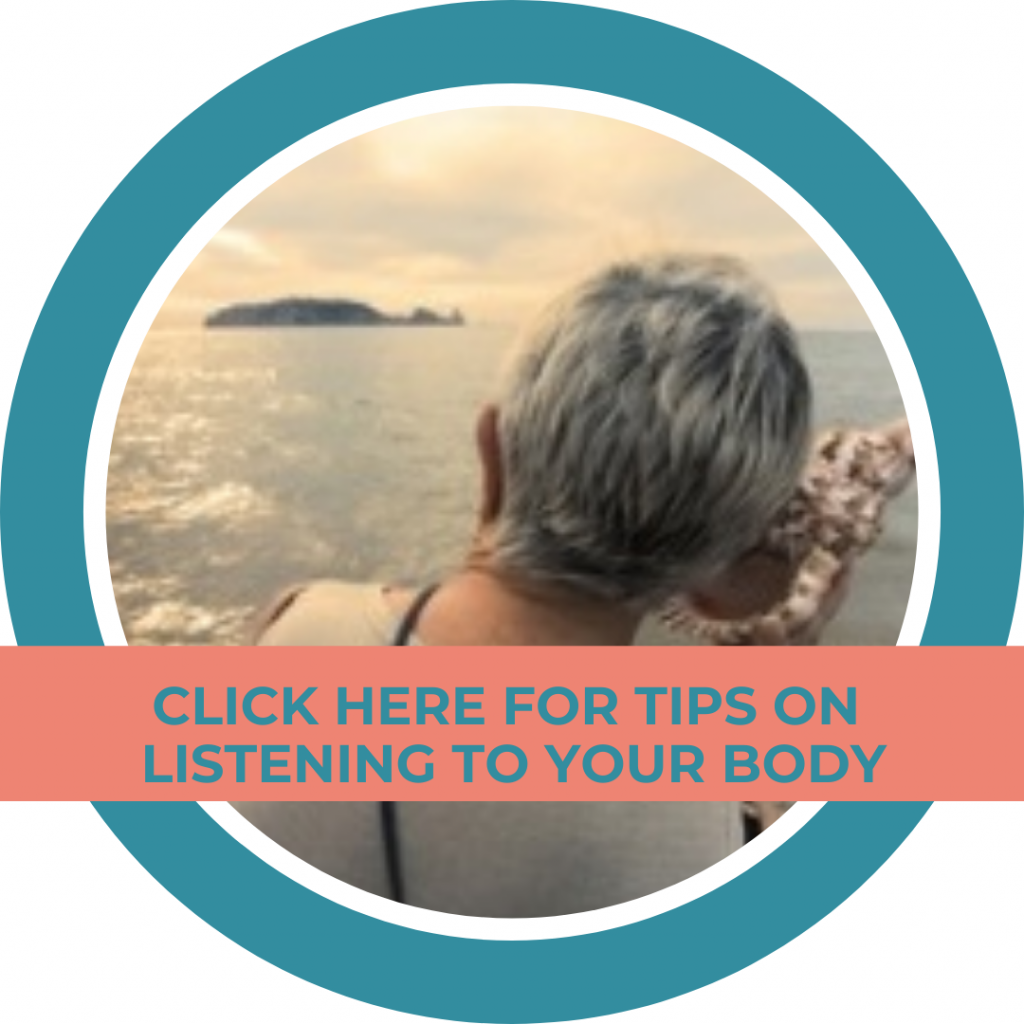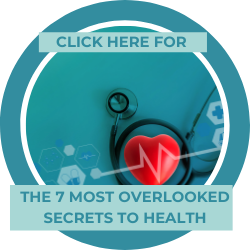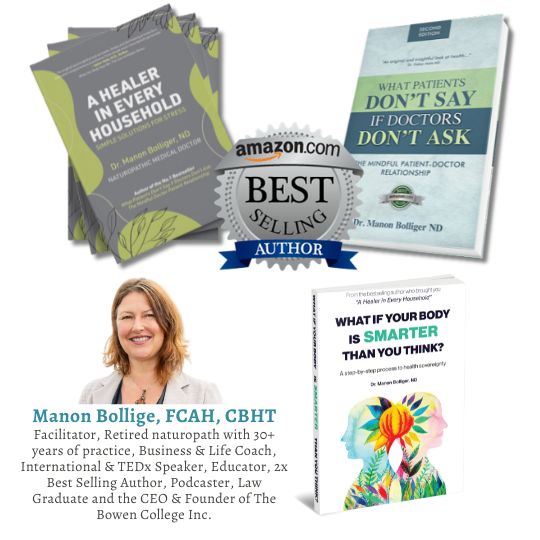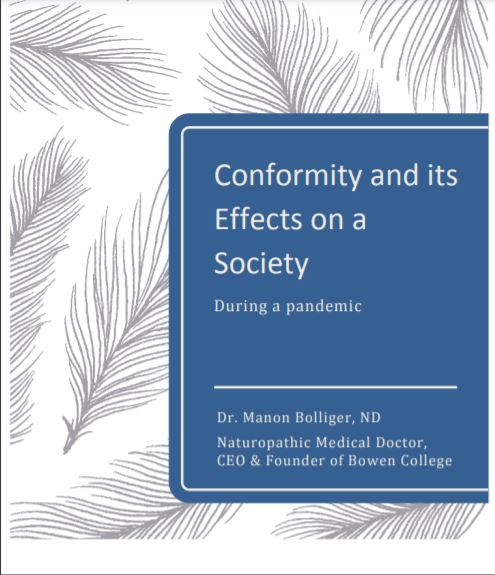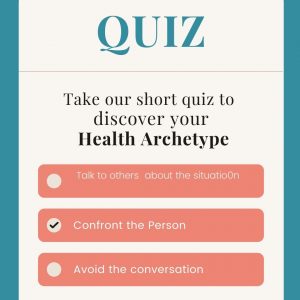Inside Energy Healing: Chronic Pain Breakthroughs with Mike Sententia & Manon on The Healers Café
In this episode of The Healers Café, Manon Bolliger, FCAH, RBHT (facilitator and retired naturopath with 30+ years of practice) speaks to Mike who emphasized the importance of accurate pain assessment and the potential impact of psychological factors like placebo effect. Tony’s injury from swimming surprisingly reduced his chronic pain, suggesting a link between acute and chronic pain management. Mike suggested alternative pain-inducing activities to potentially aid healing.
Highlights from today’s episode include:
Mike and the importance of honest feedback from clients—encouraging them to report truthfully even when a technique doesn’t work, as this helps practitioners refine and improve their healing methods.
Mike explains the shift from using the term “suppress” to “neutralize” or “cancel out” energy signatures, to better describe his pain reduction technique and avoid negative connotations.
– – – – –
Manon explains the need for thorough, transparent assessment and follow-up of pain intensity and frequency, so practitioners and clients have accurate benchmarks to measure healing progress.
ABOUT MIKE SENTENTIA:
I’m Mike. After studying and practicing energy healing 20+ years, I’ve developed a unique system of energy healing, specifically designed for chronic pain conditions.
I’m truly so grateful for every client who’s placed their faith in me and who I’ve been able to help get back to doing what they love most over the past two decades. They’re the reason I do this work!
In addition to being an energy healer for chronic pain, I’m also a science geek and love reading research. My books cover holistic care techniques that actually work, and the evidence behind them.
Core purpose/passion: The mission of Healing Lab is to see Energy Healing integrated into mainstream medical practice and to see it covered by insurance in the same way that acupuncture is becoming. We know there is modern science behind energy healing even if we don’t fully understand all the mechanisms yet.
Website | LinkedIn | Instagram | YouTube | Facebook | TikTok |
ABOUT MANON BOLLIGER, FCAH, RBHT
As a recently De-Registered board-certified naturopathic physician & in practice since 1992, I’ve seen an average of 150 patients per week and have helped people ranging from rural farmers in Nova Scotia to stressed out CEOs in Toronto to tri-athletes here in Vancouver.
My resolve to educate, empower and engage people to take charge of their own health is evident in my best-selling books: ‘What Patients Don’t Say if Doctors Don’t Ask: The Mindful Patient-Doctor Relationship’ and ‘A Healer in Every Household: Simple Solutions for Stress’. I also teach BowenFirst™ Therapy through Bowen College and hold transformational workshops to achieve these goals.
So, when I share with you that LISTENING to Your body is a game changer in the healing process, I am speaking from expertise and direct experience”.
Mission: A Healer in Every Household!
For more great information to go to her weekly blog: http://bowencollege.com/blog.
For tips on health & healing go to: https://www.drmanonbolliger.com/tips
SOCIAL MEDIA:
– Linktr.ee | Rumble | Gettr | Facebook | Instagram | LinkedIn | YouTube | Twitter |
About The Healers Café:
Manon’s show is the #1 show for medical practitioners and holistic healers to have heart to heart conversations about their day to day lives.
Subscribe and review on your favourite platform:
iTunes | Google Play | Spotify | Libsyn | iHeartRadio | Gaana | The Healers Cafe | Radio.com | Medioq | Audacy |
Follow The Healers Café on FB: https://www.facebook.com/thehealerscafe
Remember to subscribe if you like our videos. Click the bell if you want to be one of the first people notified of a new release.
* De-Registered, revoked & retired naturopathic physician after 30 years of practice in healthcare. Now resourceful & resolved to share with you all the tools to take care of your health & vitality!
TRANSCRIPT
Introduction 00:00
Welcome to the Healers Café. The number one show for medical practitioners and holistic healers, to have heart to heart conversations about their day to day lives, while sharing their expertise for improving your health and wellness.
So welcome to the healers Cafe, and today I have with me Mike Sententia, I should get the name right from healing lab, energy healing. And he has been studying and practicing energy healing for the last 20 years and has developed a unique system of energy healing specifically designed for chronic pain conditions. And this is actually a follow up from our first interview in which I I actually decided to with, with my partner, Tony, to experiment with this, because Tony, all of you know, from some of the different podcasts I’ve had, has been suffering from this chronic pain, and Mike generously offered to just follow up and be really transparent about sort of not just what happened in this one therapy, but really talk about healing and the expectation of the practitioner, what the expectation of the client, you know, what unfolds? What are we looking for? That type of discussion, so it really should be a very exciting discussion for all practitioners to look at and and I’ll add, because you’re not up to date for the last two weeks, what has transpired, so I’ll put you up to date. But why don’t we start with so we had our an original session with Tony, and Tony’s here near me, but he’ll come on in a moment, and then also a follow up session. So maybe I’ll get you to summarize from your perspective, what you what you noticed
Mike Sententia 02:13
much for having me back, and thanks so much to both you and Tony for being willing to try this with me. So we did two healing sessions. First, high level, all of my sessions come with a money back guarantee, because I know nothing works for everyone, and I think skepticism is the correct stance to take when it comes to energy healing. So somebody can come in get a session if it doesn’t work for them, if they’re not completely satisfied, they don’t pay. And I think that’s super important to let people try it for themselves. So I worked with Tony. Is it okay if I share the details of Tony’s health condition?
Manon Bolliger 02:49
Tony, do you give the approval? Definitely, yes, definitely.
Mike Sententia 02:53
So Tony has neuralgia due to shingles, so the neuralgia is over half of his face and a chunk of his body. I have a lot of experience working with neuralgia due to, like a slipped disc. Right? Neuralgia is when there is inflammation in the nerve. I’m sure you know this, but this is for the viewers, yeah, if it’s if a disc slips in the spine and it presses on the nerve that creates inflammation in the nerve, which sends a bunch of weird signals up to the brain, and the brain can interpret that as a burning or electrical sensation in the body. If you’ve ever whacked your funny bone and felt this tingling all down your arm, that’s what’s going on. The funny bone is where a nerve is exposed, and if you hit it, that creates weird signals up to the brain that feels like tingling all down the arm. So neuralgia is when you have that all the time. I’ve done a bunch of work with folks who have that from slipped discs or similar things. I’ve had some really good results. There’s some unique energy signatures where the neuralgia is felt that I only see with neuralgia and neuropathy clients that I don’t see with anyone else. Initially, when I worked with them, I expected to just find inflammation in the nerve where the slipped disc lives. The reason I keep touching my neck is because my first client had a cervical spine injury and shooting pain down her arm. And we got her pain down off of a four to a zero in the first session, and after four sessions, she was done with me. I expected to only be working where the inflammation was, but what I actually found is there were a bunch of unusual energy signatures down her arm, or I’ve worked since then with sciatica clients, there’s a bunch of unusual energy signatures down the leg, and when I suppress those energy signatures for so many of my clients, their neuralgia pain comes down. I had recently a. A man with a slipped disc who was having difficulty walking because of the intense neuralgia, neuropathy, sciatica, these are all different terms for essentially the same condition. And after one session, his pain steadily came down. I actually had to do a touch up in there to keep the energy working with Tony. In that first session, I did my standard techniques. No change, I went back, tried to be more thorough. No change. Remember, this happened so quickly that I can say, Great. Test it out. Let me know how it worked, right, which lets me then go back and fix it if I missed a spot. I did three times trying to be more thorough. No change. We said, Hey, let’s just see how you do over the course of the next few days. Let’s see what happens. I with all of my clients, I check in every week to make sure they’re doing well. If anyone’s not doing well, if their pain comes back, they get a free touch up session to get the energy working again, or they get a full refund. And you told me with Tony that the pain levels were the same, the duration was less. I was like, Hey, let’s, let’s see what we can do. Let’s. And I’d also been reflecting on the session, thinking ..
Read more...
about what might work better. One of the things I often do when something’s not working is I look at the full energy signature. So let me break that down. Think of the energy signature as this big complex, like, almost like a sound wave, right? And there’s different parts of it. I think of each part as corresponding to a cellular process. So there’s part of the energy signature is for, like, tissue growth, and part of the energy signature is for, you know, repair of inflammation, and part of the energy signature of nerves is for sending signals. And so I wanted to look at the Fall energy signature and see if maybe right. I’ve been previously focusing on just the sending signals part, but maybe there was some unusual signature happening somewhere else that I was missing. And so I did that, and I looked at the Fall energy signature, and I found a bunch of extra signatures that I don’t normally see in neuropathy clients. My best guess is that this is related to the infection the shingles, because I also, in the last month, had a Lyme disease client for the first time, we did not get results, and I found a bunch of extra signatures that I think is related to the infection, and I tried suppressing those signatures also. But one of the unique things about what I do is that I dial in a very precise energy for what’s going on in the person’s body. So rather than using one universal energy for everyone, I dial in just the right energy for what this person’s experiencing. This has the benefit of being stronger and longer lasting and all of those things, but it has the downside that if it’s something new that I’m working with, I need to figure out what adjustments to make to the energy signature. And it turned out that with Tony and also at the Lyme disease client, even after looking at the full energy signature and trying to suppress the additional signatures that I was finding, we still weren’t able to get any results. And that is the nature of developing new techniques and understanding or encountering a new thing in a client, in a client’s health history. So that’s my story on what happened.
Manon Bolliger 08:37
Okay, well, I’ll add the pieces that I recall So, and what you’re saying is, is what I’ve understood as well. So it concur. And obviously that’s, is that your experience too? Yeah, just to make sure you could come join us, if you were talking about you, if you’re up for it. Okay, yeah, so yeah, and we’ll talk about what’s happened since. So anyway, so one of the things that I remember triggered your curiosity a lot was, well, actually, let’s start with the first session. So the first session, it you were focused on the pain. Because if the pain, the expectation I understood, we both understood, is that if the pain hasn’t really diminished, something else is missing. In other words, your expectation is that you would see the pain change, right? And so there was two things I’m I want to share about that, mostly from my, you know, my practitioners, and any practitioners out there, not so much for your sake, but the there’s the pain. And then there’s also the frequency and the intensity of the pain, that are factors that matter and they may need a little bit longer to assess. So in other words, his the intensity was a 10 or 12 out of 10 in the acute moments, and the frequency of those was, let’s say, at the worst, maybe every hour. And in between the resting period was about a six. So seeing a change, as in less peaks would be a good sign. Or maybe the peak going up to, you know, 678, instead of 1012, or the resting being at a three would be all good signs. So this is kind of what we were monitoring to see if we saw a change. And I would say, not really, right, we didn’t see that then on our second consultation, because you were willing to continue, and I’m very persevering. I need to know why on earth, you know, is there a resistance? So there we talked about the autonomic nervous system, and I mentioned this burping, which doesn’t typically come with neuralgia. It’s not one of the common symptoms. So in homeopathy, it would be like a standout symptom. It’s a peculiarity. But if we want to understand it, it’s something to do with the system, the shock, you know, there’s something else going on and so on. The second session, you also address that as one of the elements from my understanding, right, that that could be off. Was there anything else that you were addressing that came to mind that you couldn’t remember?
Mike Sententia 12:21
One of the one of the tricky parts with doing variable, with working with someone who has variable pain, is, how do we know if it’s working right? If his pain, when it’s not in a what it’s not elevated, varies from a four to a six, and it’s a four right now, is that because it would be a four anyway, or is that it would be a six anyway and it’s down? Yeah, but I think that over time, you were able to see there wasn’t really a change to that. One of the things that stands out, that was really interesting to me, that I think is useful for other practitioners, is initially Tony, kind of, he wanted me to feel good about myself, right? I like I was, you know, I was showing up as really wanted to help him, and he wanted to be like, you know, yeah, I feel, I feel calmer, I think I feel a little better. And it actually took a few follow up questions to get him to tell me that there wasn’t any change to the pain level. And I think 510, years ago, I would have been very eager to hear that I did good and been like, awesome. You feel calmer success. And it has been part of maturing my practice to be like, That’s great that you felt calmer now. What are your pain levels? How does it compare? Tell me that it didn’t work, because I really want to get accurate data. So Tony, I just wanna say thank you for, like, giving me the honest answer. And not everyone out there. Yeah, it can be a little like it can take some some work to get used to hearing that it didn’t work, but it’s so important for taking care of people and developing your skills
Manon Bolliger 14:03
and your experience. A little bit of, yeah,
Tony 14:06
I think I was a little bit surprised at myself. Obviously, I was being honest, but I’m certainly not. I’d never seen myself as a people pleaser by any instant. You can ask a lot of my peers about that, because it’s never been the case, but I don’t know, for some reason, in a healing environment, possibly, or yeah, in that relationship, I felt a bit, yeah, I wanted to give you as much positivity as I could, you know, and almost knock down a couple of degrees of the pain I’m feeling, but I think I held back on that just a little bit, but that was certainly, yeah, I could feel that quite strongly, and I just wanted to be honest in that kind of environment,
Manon Bolliger 14:55
and I think I could add to that from that client point of view, there’s the pleasing come. On it. But there’s also the, you know, what in allopathic medicine is considered to be placebo, but it’s the actual true healing capacity of the body that you know, when feeling some sort of alignment or some sort of care or nurture or love or whatever it is that’s happening. Then it’s like, it, it wants to go with and, you know, we always say, like, at least I learned in homeopathy that if a patient says, Oh yeah, they come, you know, next visit, let’s say, and they say, Oh yeah, I felt I felt really good. And it’s like, okay, you felt good, good. Like, let’s not bring that down. But I will need to wait longer to see if it’s a placebo effect. And I’ve seen that a placebo effect can take sometimes five weeks where the person can actually run with the good feeling, but it’s actually not the right remedy. You know, in other words, when they come back, it’s like because, you know, I don’t want to talk about homeopathy here specifically, but you know, there’s many things you check and that’s when I have to retake the case. I know that there they, they didn’t. They subconsciously did this. Or maybe there was a conscious desire, like Tony mentions he wants to to please, which is not in character, but it’s still the truth. What happens? Well, no, in a doctor patient relationship, whatever you want to call it, we know, in a healing circumstance, not only do you want to get better on one level, but you want to honor the person who’s especially, you know it’s I’m in you don’t get paid unless you, you know, you get better. And it’s that even ups anti
Tony 17:04
actually, I think that did that had a bit of, yeah,
Manon Bolliger 17:07
because you’re like, Oh, we don’t want you to waste your time. And, you know, so that had, like, because I, last time I talked about that, that has very good effect, but it also has the people pleasing part that could be amplified
Mike Sententia 17:21
that’s so interesting. That’s a great point. I hadn’t, hadn’t thought of that
Manon Bolliger 17:28
Yeah, well, it’s something to look for, if you know true. I mean, because we know we this is a people pleasing society we’re in anyway. So that was the point I want to raise. The other thing on the client level, which, yeah, I think we briefly touched upon it, but this is the time to discuss it, and maybe for you to expand on what you mean. And this is the word suppression. So now words matter, right, obviously, and, and the alignment of the client towards a word matters. You know, it’s like, for example, I’ve had patients who they come in for a whole bunch of different things, or they came in all past tense, but just to clarify for the powers that might be anyway, and they like they still want to do the operation, even though, from my understanding, there’s not going to be any of the things that to take out that would have been taken out, right, for example. But they’re so aligned with the surgery that the most therapeutic thing I can do is go is, is Let us allow them to do this in the sense that even though I know that I’ve taken care of the problem, you know, and they’ll come back and say, you know, you won’t believe this. They opened me up and boom, it was gone, or whatever. You know, it’s like, actually, I do believe that, but, you know, but they, they’re so aligned that alignment is, is critical. So the word suppress, because we talked about it, and, you know, it’s like, that is a very allopathic term, right? That’s what drugs do. They suppress the symptoms, the expression of the symptom. And there was a disalignment with that word, even though I tried my best to explain it in, in your terms, it it didn’t feel like, you know, like homeopathies, like cures, like, you know, vibrational energy. You try to match it. You don’t go you don’t suppress. And I came up with another word, which, of course, right now fails me, it’ll come though. And I was thinking, why the word suppress, and could you explain what you’re doing? Because you’re not suppressing in the allopathic way of looking at it, you’re using it in a different way.
Mike Sententia 20:08
You know, that’s really interesting.
Commercial Break 20:10
What would your life be like if you were pain free? If you were one of the millions who suffer from chronic pain? The thought of just one day without it may seem impossible. This is often because conventional medicine tends to fall short in the treatment of pain, opting to prescribe pills or recommend surgery rather than getting to the root cause of the problem. But if you are suffering with emotional or physical pain, there is hope. Join the founder and CEO of Bowen College, Manon Bolliger, live online for your body mind reboot, learn how to listen to your symptoms and get to the root cause of your pain, plus be trained in basic Bowen therapy moves so that you can reboot your body for optimal health. You don’t have to live in pain, you can heal, stop the pain pill cycle by visiting www.yourbodymindreboot.com to learn more and To register.
Mike Sententia 21:20
I actually had this similar conversation with another client recently who, um, asked me, when you say suppress, does that mean you’re just suppressing the symptoms? And I realized, uh, based on the conversation with you guys and the conversation with her, that actually the word suppress is bringing up the wrong idea in people’s minds. So now I’m thinking about what word might I replace it with, but what’s happening? So we talked about how the energy signature, you can think of it like a sound wave, and there’s a bunch of different parts, right? There’s the, you know, cellular growth and responding to inflammation and pain signaling. And, you know, depending on what’s going on, we might want to work with different parts of the energy signature, and there are other parts that we don’t want to work with at all, like, you know, just bringing in ATP and bringing in energy, we probably don’t want to mess with that. And the way that I think about this is, if I if we can take part of the energy signature and increase it, that increases the corresponding cellular process. And if we take that part of the energy signature and decrease it, that decreases the corresponding cellular process, at least, that’s the theory behind everything. And so what I’m doing when I work with pain is I’m taking the parts of the energy signature that are elevated in pain, and you can think of it like noise canceling headphones, right? You have a sound wave, and you play the exact opposite sound wave, and it cancels out the noise. So here I’m taking the energy signature that the person has, and I’m applying an inverse energy signature to cancel it out and bring it back down to zero. And I’ve previously been using the word suppress to talk about that. I’m suppressing that part of the energy signature, but I’m thinking that maybe negate or cancel out might be better.
Manon Bolliger 23:12
Okay, I have another word for you, neutralizing. I like that because neutral is, you know, it’s okay. And also because, you know, it’s kind of hip to say, oh, in certain you know, alternative therapies or traditional therapies, to say we’re balancing the body. But there’s no such thing as balancing. What we’re doing is increasing adaptation, right? But people accept balancing because it’s a neutral word, so neutralizing, it has the impact of it. That’s what the sound thing is, it’s neutralizing, right? And neutral is neutral. You can’t have a negative association to suppressing, right?
Mike Sententia 24:00
Anyway. Thank you so much. I really appreciate it. One of the complexities also, so with pain, I want to bring the signature down. With inflammation, I want to bring the signature down. But then also, if tissue is damaged, I want to take the parts of the energy signature related to growing healthy new tissue, and I want to boost them. Specifically. I want to boost the ones that a kid has in that tissue that an adult doesn’t have. The idea being to help grow healthy new tissue. I first did that for arthritis clients, and over the course of a year, most of our arthritis clients wind up not needing me anymore. And we even have some imaging evidence of cartilage regrowing. So I like, I like, neutralize, and then I’m probably going to use boost for what I do with
Manon Bolliger 24:51
right regrowth, yeah, or, or rebalancing, or, you know, like, you could use, yeah, it’s
Mike Sententia 24:58
rebalancing for growth. Some. Like that. So it’s so interesting being both a practitioner and a marketer, right? And figuring out,
Manon Bolliger 25:09
I think anyone who’s in the, you know, in the fields we’re in, you’ve got to understand the market, because, you know, and the words matter, right? And they matter more and more. Okay. Now I realize we have, like, 10 minutes, so I want to update you to happen since, because I think you’ll find this fascinating. So Okay, after the second treatment, unfortunately, or whatever, the way the universe has it, there was nothing, you know, no, no improvement again. And it’s like, you know. And so that was, that was quite, it was quite depressing, in a sense that, you know, we’ve done so many treatments. And people know, I’m a naturopath, and, you know, and I’m a really well known homeopath. I’m a bone therapist. Have a school. I can’t do anything, everyone. I’ve tried nothing yet, right? So I’m like, Oh, this is, I don’t know anymore what to do. So we’re out on Bowen and, you know, we’re, we’re looking after a grandkid and helping my daughter move and do all these things anyway. And we go swimming, and Mister Tony,
Tony 26:23
I mistook the four inches of water for four feet of water. So Oh my, oh
Manon Bolliger 26:30
my, yes, and so he went, Oh straight down on a on a rock. Now it didn’t cause the concussion, that was likely, but he, he had blood everywhere. Part of his nose was taken out. Blood here, blood here. This is only the third day, and we’ve used, you know, arnica, we’ve used calendula. And you think, oh, that’s That’s the miracle. No, no, I know that works. That’s not the issue. What was fascinating about this whole thing is that when that happened, it’s like the other pain, the one that was the steady went down to maybe a two or three, and the acutes didn’t even happen that day. Wow. Happened only, like twice, and at a six at the most on the second day. Neat. Yeah. So now we can see he’s got pain again, it’s, it
Tony 27:42
There must be a simpler way to mitigate the pain than diving in the water. Absolutely
Manon Bolliger 27:47
no, don’t do the concussion. But I wanted to share that, you know, yeah, in in Hanuman, what is it called? Oh, my God, Organon of medicine, right, which is really one of the fundamental books for all, all medicine. It’s not just homeopathy, but homeopathy because it heals. He was looking not at the impact of drugs, that’s a different book, but the actual impact of healing. And he noticed that when there was epidemics or other stronger acutes that the chronic condition, and he was talking specifically about arthritis, would pretty well dissipate, and if it lasted long enough, it would actually allow the body to completely rid itself of that disease. Wow. Yeah, so it’s, it’s fascinating. So we were thinking until today, where we have our podcast arranged, that maybe we’re finally on to something. But there this is a clue. I mean, you know, I don’t know what he needs to do next, but I thought I’d, I’d share that with you, because you know that there is a change still. Now we’re only very young into this, right? So day four, I don’t know, but there’s a, there’s a change that happened there huge. And one of the things, sorry, one more thing. And then you can say, if, but he related to that kind of pain. He said, Ah, that’s my kind of pain. Now he he was raised in a rough neighborhood, and I guess this is part of the core, but he could feel that pain. It was like it almost like this. You know, it’s a pain he could welcome because he knows he could deal with it, whereas the other ones this electric pain that he’s disassociated with. And I kept saying, Where is that other pain? I don’t know. It’s there, but maybe I don’t. Know, I’m not even, I’m in this one, and I can handle this one, right? And it just shows, too, how the also, I don’t want to call it the mind, it’s really the body mind, but how we can sort of move. It’s not, nothing’s fixed. You know, that’s why, I mean, we both agree that the potential for healing is there always, because nothing is fixed, right? But anyway, do you have any first thoughts on this? So
Mike Sententia 30:29
first, Tony, I’m so sorry that that happened. The that that looks painful,
Tony 30:35
yeah, but it seems like it’s got some benefits to it as well, yeah,
Mike Sententia 30:39
and I’m really glad that there’s no concussion. So in my area of expertise with energy healing, I don’t have like, like a, you know, it doesn’t unlock an insight of an energy technique that I could use. But what does occur to me, just as general knowledge of healing outside of my expertise is there are, I’m sure you’re familiar with this, the mind can only process so much pain at any given time. I run into this a lot, where somebody comes in, they’re like, Oh, my knee hurts so much. And I do my thing, and their knee pain comes way down, and they’re like, Oh, I never noticed. But now my other knee hurts like, in their mind, it’s like, oh, the pain has moved. But actually, what’s going on is now that their brain is not so focused on that first knee, it can notice pain elsewhere in the body. And so then I then work with the others, and I tell them, hey, there’s a finite number of spots that are hurting, and eventually we’ll find them all. And I explain this sort of what’s going on so they don’t get discouraged. But what occurs to me is I’m wondering if other types of pain that don’t carry a risk of concussion might help some people do like an ice bath in the morning. Spicy food has a long history of being associated with pain and healing. Um, so I’m wondering if those other types of pain might also help in some way,
Manon Bolliger 32:13
right? And you see them as now, using the it’s they’re not suppressive, they’re more moving the energy
Mike Sententia 32:25
and somehow, right? And I realized that, the way I said, it sounds like, Oh, we’re just going to get the brain to not notice this pain. But if this is this pain has been down. The neuralgia pain has been down for days now. That’s probably not just the brain being distracted. There might be something with like, you know, the brain is, you know, remembering how to feel normal,
Manon Bolliger 32:46
right? Which is kind of the, the basis, you know, of analgesics, if they work now, they don’t work for everyone, and there’s plenty of side effects. But if people take them for a very short time and they don’t have, you know, nasty side effects, it breaks the pattern which allows the body to heal. So it could be a pattern breaker, you know that in that way, right? It’s funny to think like this, but we are definitely open to so if anyone’s listening to this and has any other ideas but cold bath, I mean, you, you actually do really, really cold showers, and I but you do, you know, it’s healthy. So it’s like you’ve overridden so much for because of the knowledge, right? So it’s interesting. How else one would trick the brain to give it a pause, right? You know? And it’s right, it’s true, if there is a pause, then the body innately goes to healing. That’s what happens, right? You know. So anyway, so that’s, that’s it, anything you wanted to say about this experience,
Tony 33:57
and now just to reiterate, reiterate what you said about, I kind of forgot, yeah, this kind of pain, or, like, physical I can deal with. I’m mute, and I’m used to it, and I did have quite a rough kind of upbringing, and I’ve kind of normalized it, and a little bit, but with the neuralgia, it’s, it’s frustrating, because it’s like, it’s inside, and I don’t see anything, you know, and I and it feels electrical, and it’s kind of out of my control, but, you know, and it’s almost like, Oh, if I see blood or something, I Oh, yeah, I can relate to that. You know, it seems a bit, not really. It’s just my experience with pain, and I’ve been through quite a bit of physical and I can deal with that. And I think that’s the thing, with the neuralgia, it’s so frustrating. It’s like, I can’t see anything, and, and it’s, yeah, it’s just totally out of my control. I suppose most pain is but I like, I think part of. The say, control is like, I can deal with it psychologically. I can see some Oh, yeah, that’s because of that. And it’s like this, I’ve got no idea what this is. I know the medical system of shingles and that, but as a normal person, I don’t relate to that. I just relate to, yeah, the physicality of it in a way, yeah.
Mike Sententia 35:25
You know, that’s a great point that so many people have invisible pain and invisible disabilities, and the people around them, it’s so easy to dismiss them. And what I’m hearing is maybe even a note of, like, dismissing it in yourself, that here you can see the injury, and so it feels real and justified in some way, whereas with the neuralgia, you don’t see anything. And there’s maybe a feeling of like, geez, what you know, I shouldn’t be hurting, and that can make it so much harder to deal with. Yeah,
Tony 36:03
I think that’s true.
Manon Bolliger 36:04
Yeah, actually, that you state something like, it’s really important to like, you know, fibromyalgia, before it became understood, you know, I had, I used to have patients coming in saying, Oh, I have that disease that nobody that doesn’t exist, you know. And I’m perfectly healthy, apparently. And it’s like, but I’m in total pain, and please be careful when you touch me, it’s like, you know, I get it like you’re living with this unseen thing and unaccepted thing, you know, which, again, triggers a whole bunch of other things. Yeah, so it’s very interesting. Yeah, well, our time is up, but I still want to give you last couple of words, yeah, and thank you for this journey to be able to share this with you. And, and, yeah, really get insights on healing and how that all works. I think this is the conversation I love to be having.
Mike Sententia 37:03
Thank you so much for having me again. I love having these conversations too. And Tony, thank you for the update and for being part of this, but the healing sessions and this conversation to any of the listeners who are experiencing chronic pain or know someone who is I do energy healing for chronic pain with a money back guarantee. It’s super simple, no upfront payment. Get your session. You’re going to feel the results right away. If you like the way you feel, pay the invoice. If you don’t like the way you feel, don’t pay the invoice. I want to make it really easy to not pay. Me. If it doesn’t work for you. I do distance sessions everywhere, and you can book a free consult at healing lab.org. That’s dot O, R, G, not.com. Somebody’s squatting that. So if you or someone you know, has chronic pain, please book a free consult.
Manon Bolliger 37:58
Not too much to add to this, because this is literally my area of passion and expertise, how the body heals. And as you can see, there’s plenty we don’t know, but there is insights on what are things that might mitigate healing, like possibly words, people’s Association, their the congruence with the you know, their direction. So to pay attention to these things, also to do a very thorough numbered, you know, intake. So what is the pain at a tent? What is the frequency, you know the the intensity as well, so that we can look at things in a week in a month, so that you really have something to base it on. And this is very important, to do it in a transparent way with the client. Obviously, you can’t guess their level of pain, or you don’t know any of that, unless you ask. If you don’t ask it, you’re missing a key part of the follow up, because they’re either saying, Well, I’m better, or they’re saying, nothing’s changed. And then you go, Well, so do you still have at the worst? Is it eight to 10 or 10 to 12? Whatever it is? Oh no, actually, no, it’s more like an eight. Oh, okay, and what about the frequency? So we really need to learn to take thorough cases, interviews, for the sake of yourself, your own practice, so that you know what you’re comparing to, but also with the with the client or patients, so that they know. Because the great thing about people is that when they get better, they forget their pain. And I mean, that’s wonderful. We don’t want to change that, so let’s at least take notes, good notes, so we can do proper follow ups. So that’s my my. It’ll share with you.
ENDING:
Thank you for joining us at the Healers Café. If you haven’t already done so, please like, comment and subscribe with notifications on as I post a new podcast every Wednesday with tons of useful information and tips for natural healing that you won’t want to miss.
Continue your healing journey by visiting TheHealersCafe.com and her website and discover how to listen to your body and reboot optimal health or DrManonBolliger.com/tips.
* De-Registered, revoked & retired naturopathic physician, after 30 years of practice in healthcare. Now resourceful & resolved to share with you all the tools to take care of your health & vitality!
